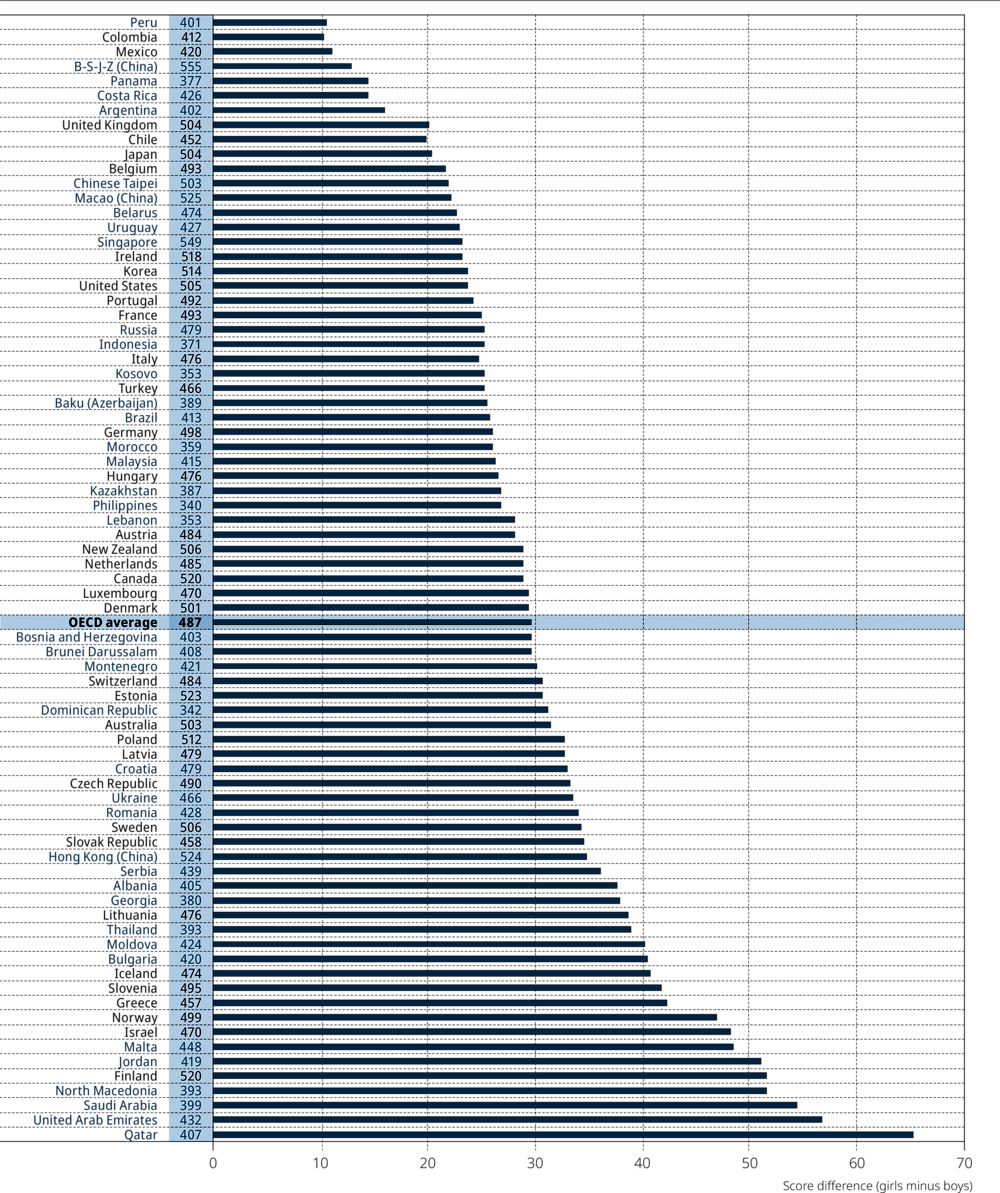Continuing the topic of my latest post on education and the PISA scores (Program for International Student Assessment), what about differences in reading performance by boys and girls? In all countries and economies that participated in PISA 2018, girls significantly outperformed boys in reading – by almost 30 score points, on average across OECD countries.
It’s a known fact that boys, generally, tend to start reading later and take longer to become proficient, as a consequence, some countries have taken steps to address this issue and make sure boys are not left behind. There is also a natural tendency for girls and boys to gravitate towards different subjects, “PISA has consistently found that girls outperform boys in reading and, to a lesser extent, that boys outperform girls in mathematics, on average across all participating countries and economies” OECD (2016), PISA 2015 Results (Volume II): Policies and Practices for Successful Schools, PISA, OECD Publishing, Paris.
Surprisingly, Finland is one of the countries in the world where boys are most left behind in reading, scoring at the bottom of the table and having similar results as the countries of Jordan and Macedonia, where vast differences in reading performance are noted among boys and girls. Not exactly something widely mentioned while people extensively praise the Finnish model.
Back in the late 90’s, the United Kingdom was already keenly aware of the literacy gap between boys and girls and created a program to narrow that reading gap specifically for boys, called the “Literacy Hour”. The program included practices that resemble classical education tenants, such as being phonics-centered, teacher-led (as opposed to child-led), and centered around grammar. There was also an effort to provide boys with materials they found exciting, such as adventures and nonfiction stories. Shortly after the program was implemented, the U.K. newspaper headlines rightfully boasted that “Boys Close Literacy Gender Gap” and “Boys Catching Up To Girls Thanks to Literacy Hour”.
Those results are also reflected in the below graph, where the U.K. shows little gender difference in reading.
A comparison of results in reading performance between 2009, when reading was also the main subject assessed in PISA, and 2018 shows that, in several countries, the gender gap in reading performance narrowed over time. In 17 of those countries, the narrowing of the gender gap in reading performance was due to an improvement in the performance of boys. In five of those countries, Estonia, Ireland, Macao (China), Peru, and Singapore, boys, and girls in 2018 scored higher in reading than their counterparts did in 2009, even as the gender gap between them shrank during the period.
However, in 11 countries, namely Bulgaria, Hungary, Indonesia, Italy, Japan, Kazakhstan, Latvia, Mexico, New Zealand, the Slovak Republic, and Switzerland, the narrowing of the gender gap in reading performance was due not to an improvement in boys’ performance but to a decline in girls’ performance.
The only subject where boys outperformed girls in 32 countries – but by only five score points – was in mathematics. Meanwhile, in 14 other countries, the opposite pattern was observed.
It is difficult to look at these results and not recognize an animus against boys in the educational context, especially in the elementary and middle school years. An acknowledgment of these circumstances, as the U.K. has done, and a specific strategy and focus, would address this reading gap and bring our boys back to elevated literacy standards.




Pretty surprising results. I hear people constantly saying that Finland has the best education in the world and the US should be more like them, well not for boys, obviously.